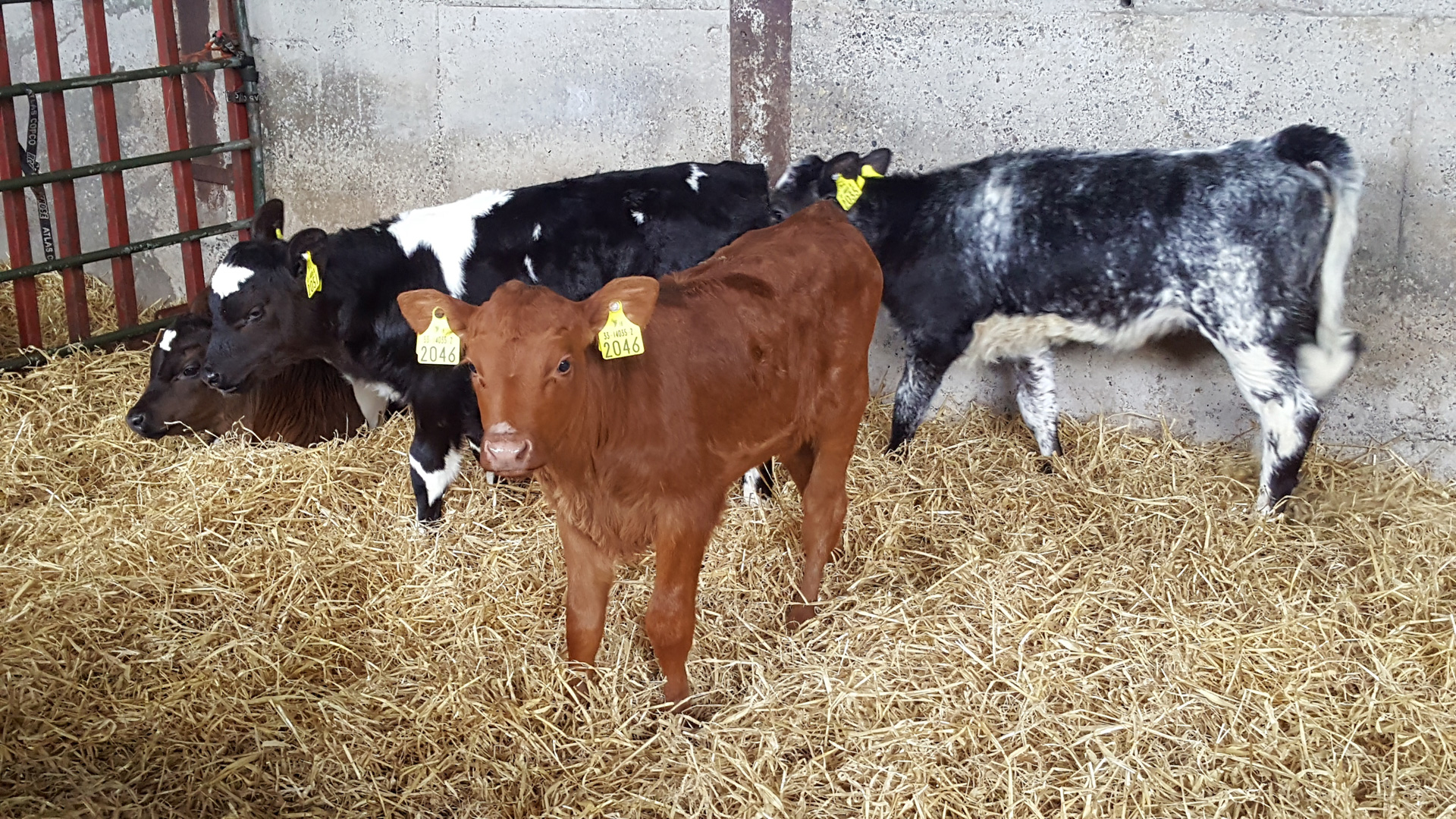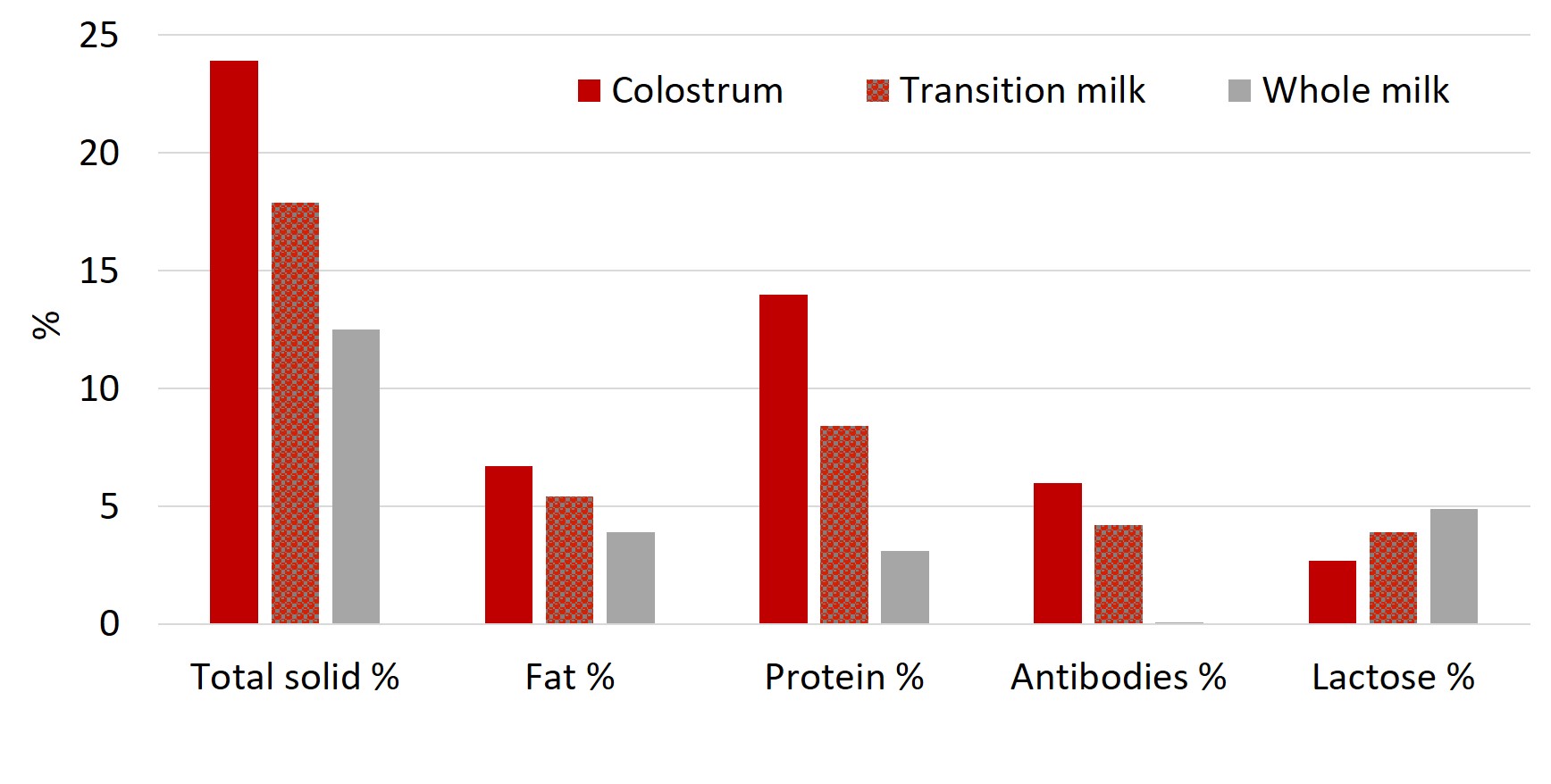Guide to transition milk

Transition milk is the milk cows produce after colostrum and before what we consider ‘whole milk’. The one key aspect of colostrum is that it contains the antibodies, Immunoglobulin G (IgG) which are necessary to kick start the immune system of calves. This is only part of the story; transition milk is produced by cows naturally for a reason.
The surface of the small intestine (SI) is like an external skin and has to withstand the physical and chemical abrasion of food, digestion and the continuous attack of pathogenic organisms. The cells of the small intestine are replaced by new cells within a few days of birth and at this stage, the surface antibody from colostrum is rapidly depleting leaving these new cells vulnerable to attack. Moreover, the gut is extremely porous during the first two weeks, making the calf extremely susceptible to scour-causing infections. Although transition milk is significantly lower in IgG compared to colostrum and calves cannot absorb this antibody from the small intestine through to the blood, transition milk contains many immune properties at a much greater level than whole milk (see Figure 1), which helps calves to fight disease. These antibodies line the surface of the intestine acting as a physical barrier to the external bugs which a calf encounters during this vulnerable period.

Source: Adapted from Foley and Otterby, 1978
In addition to an extremely vulnerable digestive system, the young calf needs extra energy to adjust to life outside the womb. Nutritionally, transition milk is greater in solids than whole milk (see Figure 1), providing the calf with more energy to fight infection and other external challenges it may face such as changing temperatures.
Contact us
Bonanza Calf Nutrition
Producers of the renowned Shine range of milk replacers for calves and lambs.
© 2017 Bonanza Calf Nutrition Ltd.
FIND US
